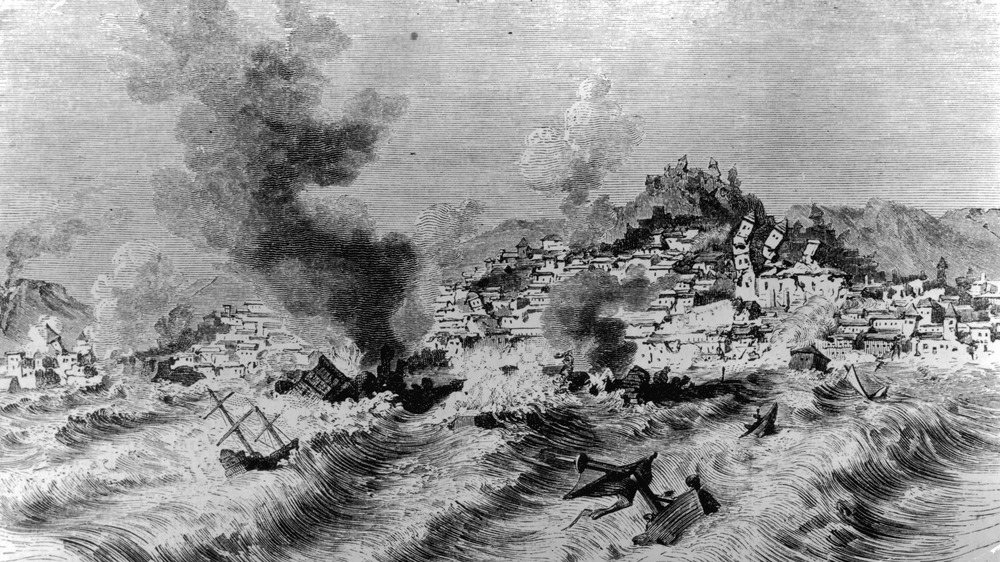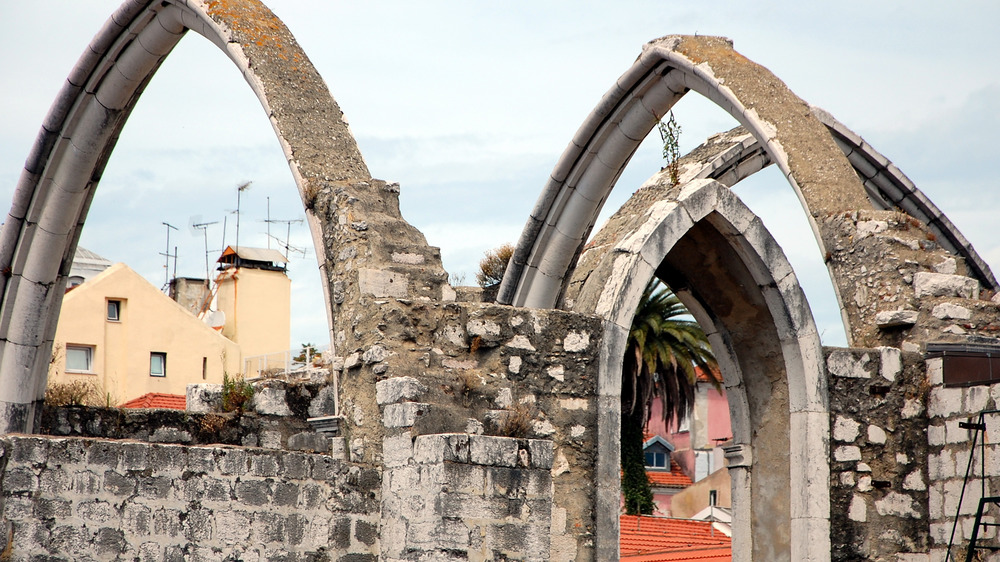The Wild And Deadly True Story Of The 1755 Lisbon Earthquake
It was November 1, 1755. All Saints Day, a Catholic day of observance in which believers the world over gather in cathedrals to honor the legions of saints the church has sanctified over the centuries. At around 9:30 in the morning, the people of Lisbon, Portugal, began to feel a rumbling beneath their feet. According to Volcano Café, what they felt was the beginning of a 9-minute earthquake that would raze that city and others in Portugal, kill tens of thousands of people there and in neighboring Spain, and ring the first death knell for the Portuguese empire, which had spread across the globe for the last three centuries. It wasn't the most powerful earthquake in history, but it may have come close.
Modern scientists can only estimate the magnitude of the quake, since the Richter scale wasn't invented until 1935, so European History Online notes that estimations of the magnitude of the seismic event rating as high as 8.5-9 are just that: educated guesses. A more recent reassessment of the magnitude published in the Bulletin of the Seismological Society of America, the abstract of which can be found on Geo Science World, lowered that estimation to around 7.7. Suffice to say, the 1755 Lisbon earthquake was a whopper, and its effects were felt far and wide throughout Europe and North Africa. Let's take a look at the devastating consequences of the earthquake and see just how destructive it was for Portugal, Spain, and beyond.
The 1755 Lisbon earthquake cause tsunamis, fires, looting, and more destruction
Volcano Café notes that all of Lisbon's major churches collapsed during the quake, annihilating entire congregations of worshippers. More than 80 percent of the city's houses suffered serious damage, as well. But the shaking earth wasn't the only deadly effect of the quake, the epicenter of which is estimated to have been in the Atlantic Ocean, about 186 miles southwest of Lisbon. About a half an hour after the quake, a tsunami looming as high as 20 feet tall slammed into Lisbon and rushed more than 800 feet inland. The wave probably killed around 900 people on its own, 600 of whom had sought shelter on a pier that collapsed.
The quake also sparked deadly fires across the city, started either by candles, cooking fires, or even ignited by looters looking to take advantage of the situation. With narrow streets, highly flammable building materials, and the chaos of the quake, the city burned for five days straight.
As with other statistics for the event, the death tolls range widely and many have been called into dispute. Some estimates speculate the number of deaths in Portugal, Spain, and Morocco to be as high 60,000, but more conservative calculations range from 25,000 to 35,000. Other deadlier earthquakes have been recorded in Europe, such as the 1908 Sicily earthquake that killed up to 80,000, but the 1755 Lisbon quake is remembered for shaking a once great empire to its core.

